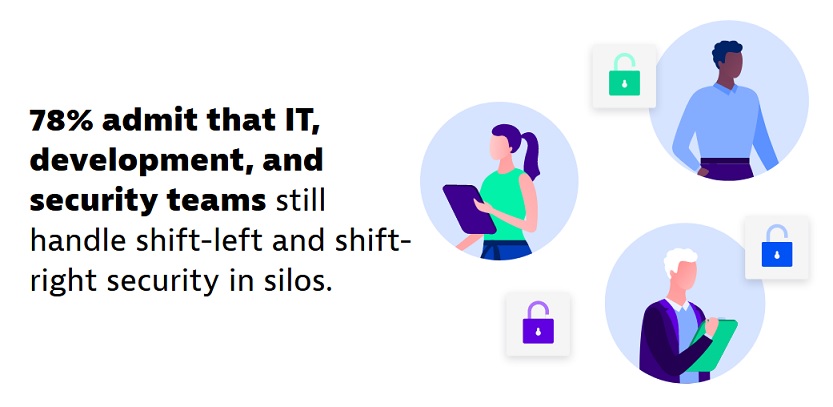Perforce Software announced the launch of the Kafka Service Bundle, a new offering that provides enterprises with managed open source Apache Kafka at a fraction of the cost of traditional managed providers.
The prevalence of team silos and point solutions throughout the DevSecOps lifecycle make it increasingly difficult for development, security, and operational teams to have comprehensive visibility into the threats affecting their cloud environments. In fact, according to a recent Dynatrace study, 77% of chief information security officers (CISOs) say it's a significant challenge to prioritize vulnerabilities because of a lack of information about the risks they pose. This issue underscores the critical role that risk assessment plays in effective vulnerability management.
As organizations modernize their application stacks around cloud-native technologies such as microservices and containers, a best practice is to adopt both shift-left and shift-right strategies. Shifting security left means identifying security vulnerabilities in development through testing, while shifting right means identifying vulnerabilities in production through runtime vulnerability analysis and other methods.
Combining these strategies helps to reduce the time it takes to find vulnerabilities from days or weeks to minutes and enables teams to be more effective in their resolution strategies. By using shift-left and -right strategies, organizations can enhance their overall cybersecurity posture and effectively address vulnerabilities throughout the software development lifecycle.
While the advantages of these practices and DevSecOps are widely recognized, many organizations are still in the initial phases of implementation.

Overcoming the Challenges of Siloed Tools
Siloed vulnerability management tools make it difficult for companies to identify and mitigate risks. Switching between and reconciling the insights from siloed tools also proves to be extremely time-consuming, as it hinders IT teams from gaining a holistic view. According to the Dynatrace study, more than 40% of CISOs say analysis is time-consuming, and managing alerts from different tools is labor-intensive.
Time spent on manual analysis detracts from time spent on innovation and problem resolution. According to the study, each member of development and application security teams spends nearly a third (28%) of their time — or 11 hours each week — on vulnerability management tasks that could be automated. Further, only 33% of CISOs have automated handoffs across functions.
The integration and automation of workflows streamline cross-functional collaboration, enabling faster response times and smoother coordination across teams. Organizations must look to adopt a platform approach to eliminate manual processes and error. In fact, 88% of CISOs say DevSecOps would be more effective if all teams worked from one platform integrated into their process.
Implementing an Approach That Converges Observability and Security
By leveraging observability and security across DevSecOps and integrating application security principles and practices into software development and operations, organizations can deliver software and services at speed without compromising application security. IT leaders need to adopt platform solutions that converge observability and security data and are powered by trusted AI and intelligent automation. Solutions that converge observability and security improve an organization's overall security posture and reduce the risk of cyberattacks, helping companies protect their reputation, minimize manual intervention, and deliver precise answers through explainable, intelligent automation.
Looking Ahead with DevSecOps: The Importance of AI and Automation
According to the study, 86% of CISOs say AI and automation are critical to the success of DevSecOps and overcoming resource challenges. By adopting AI and automation and using tools that converge observability and security, customers have reduced the time they spend identifying and prioritizing vulnerabilities by up to 95%, helping them deliver faster, more secure innovation that keeps them at the forefront of their industries.
Industry News
LambdaTest announced the launch of the HyperExecute MCP Server, an enhancement to its AI-native test orchestration platform, HyperExecute.
Cloudflare announced Workers VPC and Workers VPC Private Link, new solutions that enable developers to build secure, global cross-cloud applications on Cloudflare Workers.
Nutrient announced a significant expansion of its cloud-based services, as well as a series of updates to its SDK products, aimed at enhancing the developer experience by allowing developers to build, scale, and innovate with less friction.
Check Point® Software Technologies Ltd.(link is external) announced that its Infinity Platform has been named the top-ranked AI-powered cyber security platform in the 2025 Miercom Assessment.
Orca Security announced the Orca Bitbucket App, a cloud-native seamless integration for scanning Bitbucket Repositories.
The Live API for Gemini models is now in Preview, enabling developers to start building and testing more robust, scalable applications with significantly higher rate limits.
Backslash Security(link is external) announced significant adoption of the Backslash App Graph, the industry’s first dynamic digital twin for application code.
SmartBear launched API Hub for Test, a new capability within the company’s API Hub, powered by Swagger.
Akamai Technologies introduced App & API Protector Hybrid.
Veracode has been granted a United States patent for its generative artificial intelligence security tool, Veracode Fix.
Zesty announced that its automated Kubernetes optimization platform, Kompass, now includes full pod scaling capabilities, with the addition of Vertical Pod Autoscaler (VPA) alongside the existing Horizontal Pod Autoscaler (HPA).
Check Point® Software Technologies Ltd.(link is external) has emerged as a leading player in Attack Surface Management (ASM) with its acquisition of Cyberint, as highlighted in the recent GigaOm Radar report.
GitHub announced the general availability of security campaigns with Copilot Autofix to help security and developer teams rapidly reduce security debt across their entire codebase.
DX and Spotify announced a partnership to help engineering organizations achieve higher returns on investment and business impact from their Spotify Portal for Backstage implementation.













